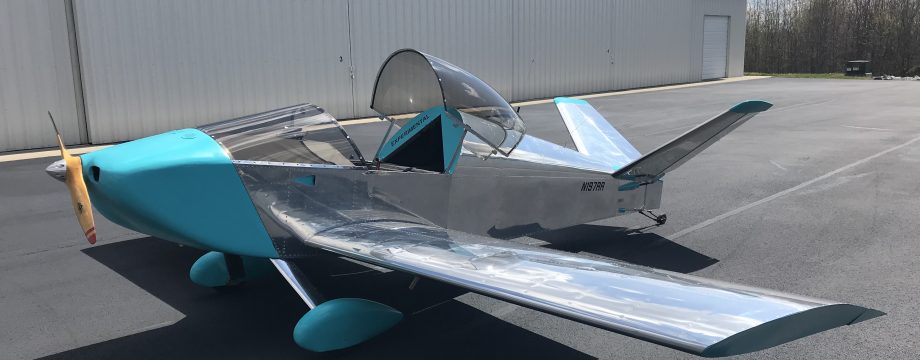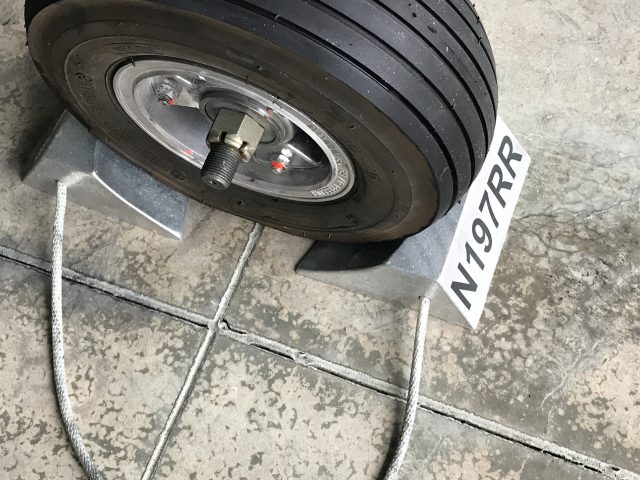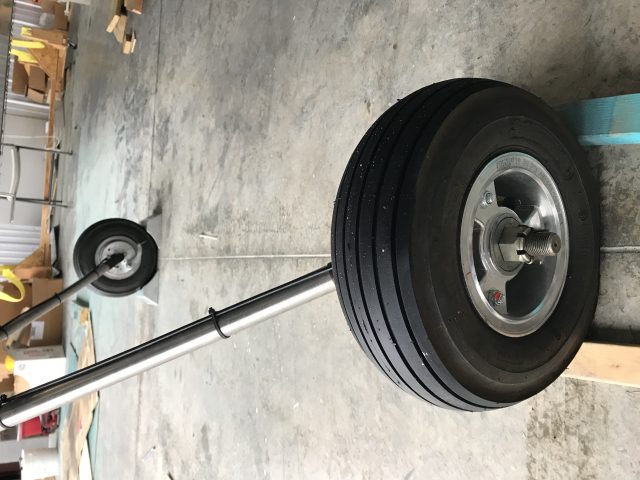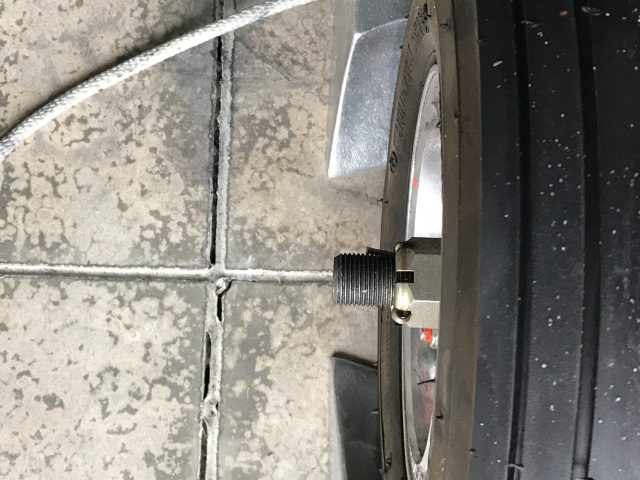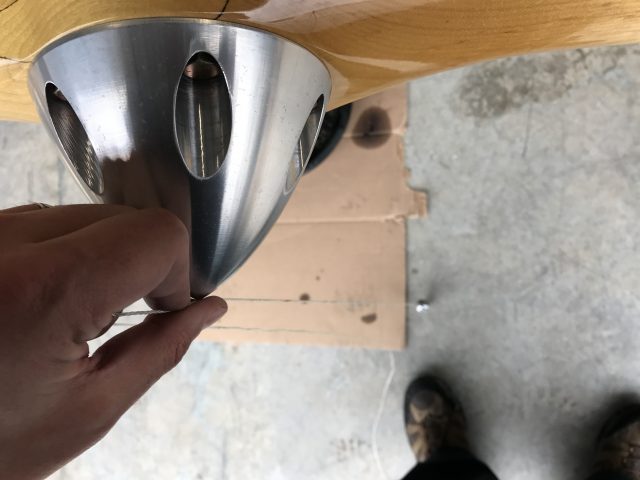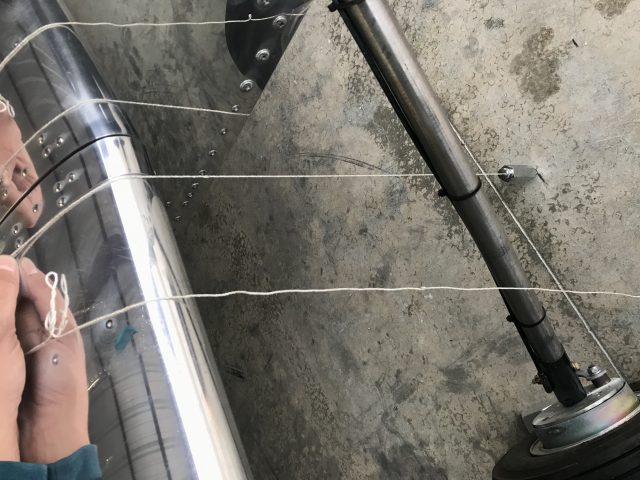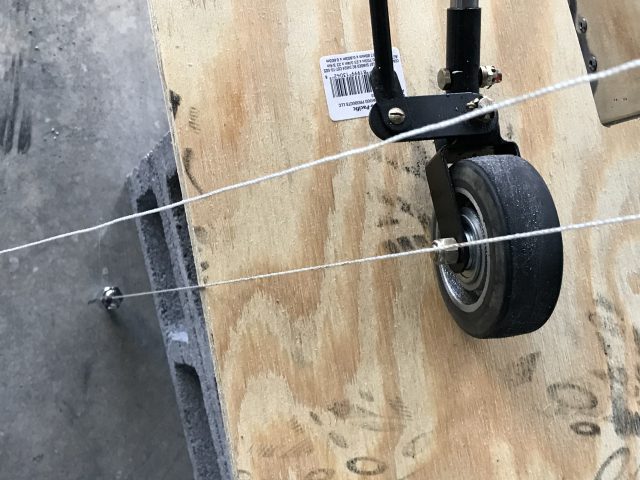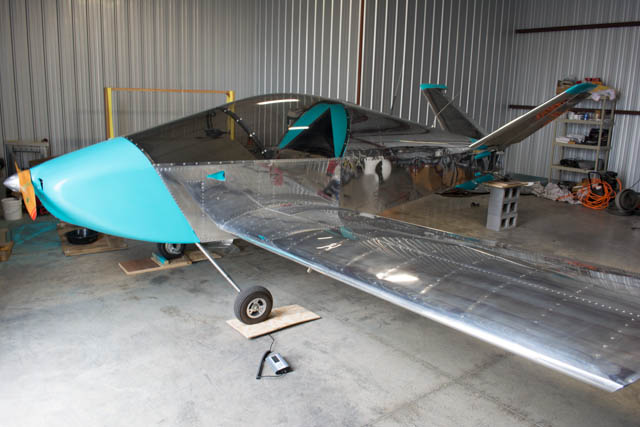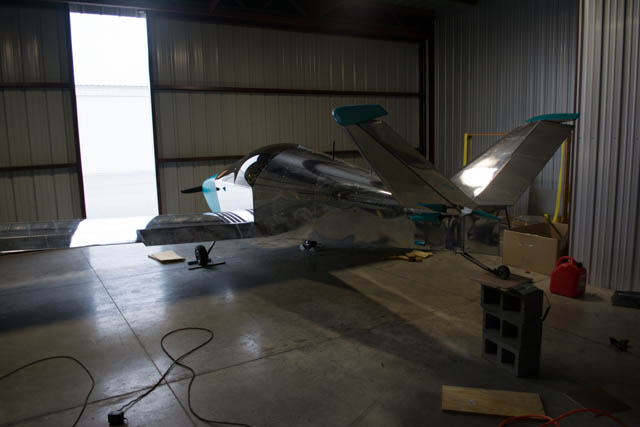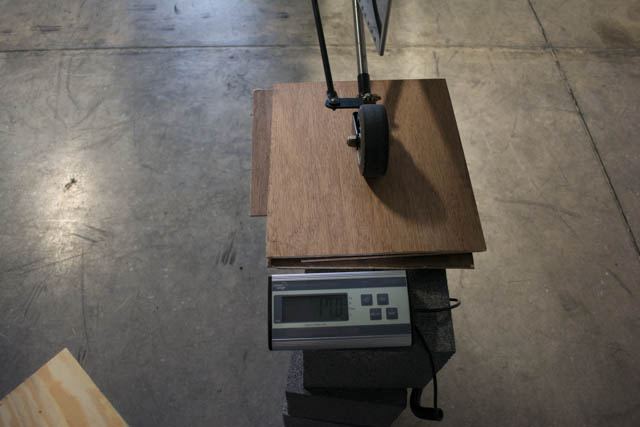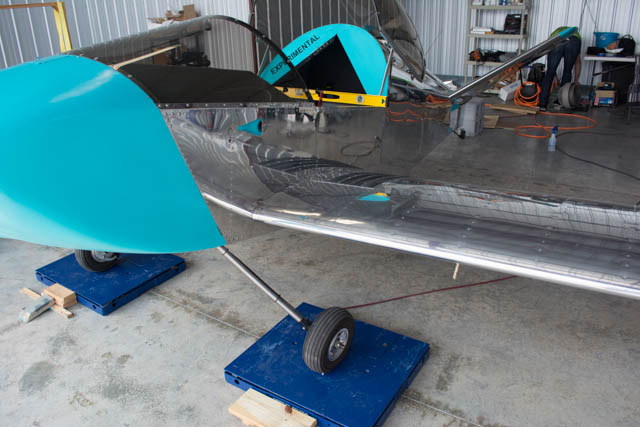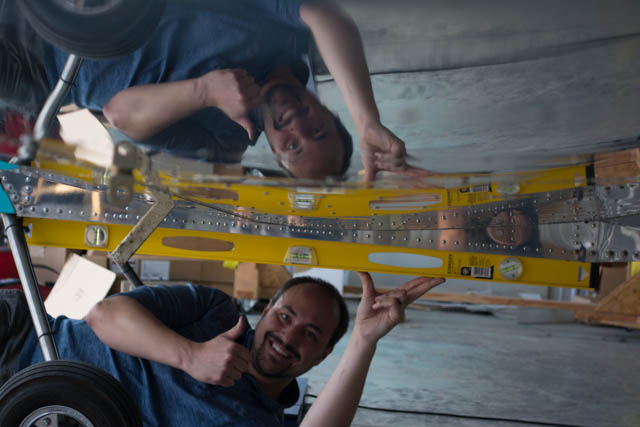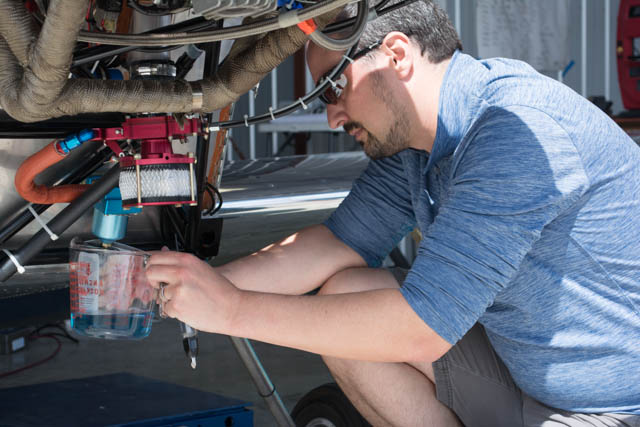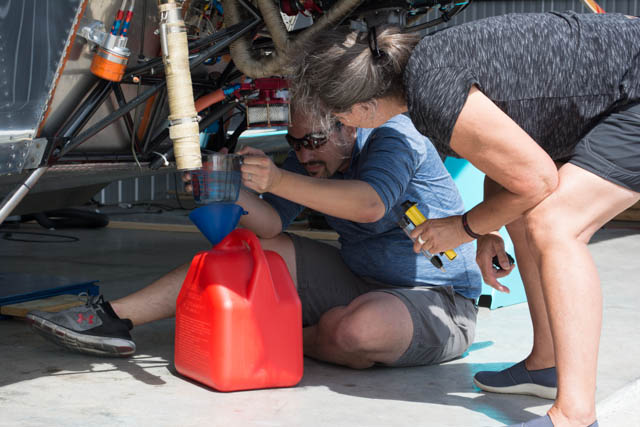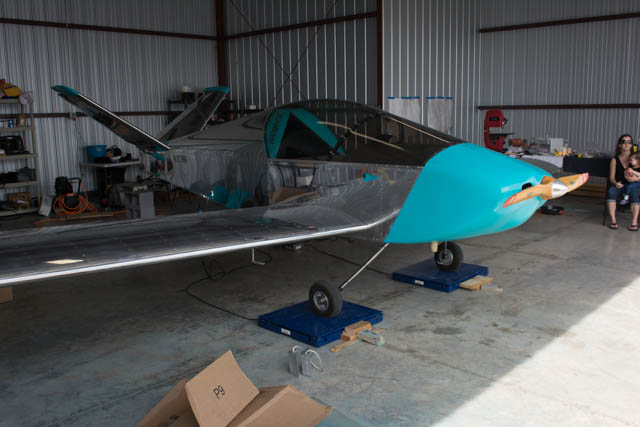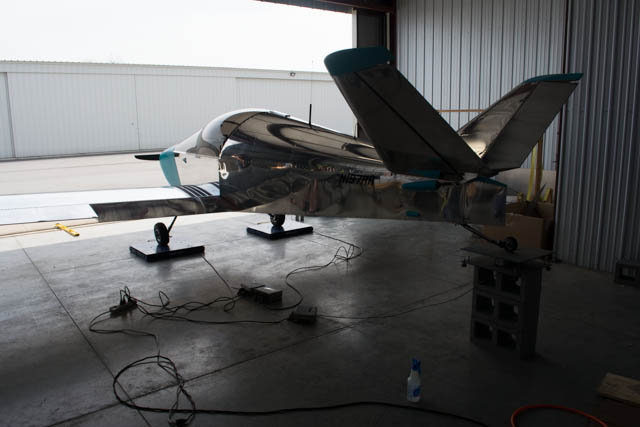Total Build Time: 1350 Hours
To begin the Weight and Balance measurements and calculations, I positioned the main wheels on an existing straight crack in the concrete floor and then leveled the tail of the plane.
I then used a plumb bob to measure the various required parts of the aircraft that needed to be included in the calculations (Spinner tip, wing leading edge, tailwheel, etc) and made marks on the floor for measurement.
With these measurements complete, it was time to weigh the aircraft. I ended up doing this twice and I’ll describe the first (failed) method first.
I purchased a relatively inexpensive package scale that supposedly was accurate up to 400 lbs, and planned to weigh each of the 3 wheels individually, re-leveling the plane each time. This was a tricky task mainly between the 2 main wheels, as I had to keep trying with various thicknesses of wood shim under the wheels in order to level the plane with the scale on the opposite side.
Once I had completed these measurements and put them into the weight and balance chart, I quickly realized something was wrong. The CG of the plane was way out of limits (forward of limit.) I decided that this method wasn’t good enough.
I decided to rent a set of 3 high-precision scales from a local industrial weighing shop. These scales were HEAVY! However this let me position all 3 wheels onto scales and level the entire plane at once to get an accurate reading.
After triple-checking that everything was in place for a correct measurement (canopy closed, zero usable fuel, proper oil level, no loose equipment in cockpit, etc) I was able to take my measurements.
The total weight of my plane came in at 694lbs. This was a bit heavier than I was hoping for, but my understanding is that the Waiex tends to be heavier than a classic Sonex (the stabilators, while only having 2, are larger, built more robustly and are thus heavier, plus the mixer, etc) and the turbocharger also adds a fair bit of weight. I thought that I might have saved more weight by polishing and not painting the aircraft. Still, I was happy that I came in under 700 lbs.
CG was right at the forward limit of the envelope which makes sense given that any weight added to the plane (fuel, pilot, baggage) are all aft of the CG and will bring the plane well within the weight and balance envelope.

